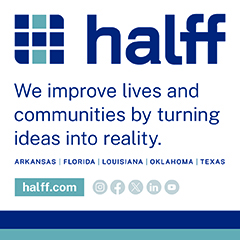With many of the nation’s critical systems struggling to meet demand, ensure safety, and comply with regulations, sustainability and resilience have become top priorities for public officials nationwide. The following projects highlight key infrastructure projects that will launch soon and while each is designed to remedy different challenges, the underlying objective is to ensure that the systems are adequate, safe, sustainable and able to withstand the ravages of weather-related events resulting from climate change.
As part of a broader climate resilience and environmental sustainability initiative, a $204 million project will soon launch to address water conveyance challenges caused by decades of groundwater over-extraction in Central California. The project will restore the capacity of a critical waterway that provides services to more than 2 million residents and supports agricultural productivity in the region. The effort will improve water distribution efficiency, mitigate drought impacts and reduce reliance on groundwater pumping.
By ensuring reliable water access for wetlands and wildlife habitats, the project will support an ecological balance. Project components will include raising and reinforcing subsided sections of the canal as well as upgrading infrastructure such as bridges and road crossings to bring them up to current safety standards. Advanced sensors and monitoring equipment will also be installed and pump stations will be improved to maintain consistent water delivery during peak demand periods. Construction is set to begin in mid-2025.
City leaders in Greeley, Colorado, will soon launch a $131 million project for the construction of a new mobility hub in the center of the city. The effort will call for the installation of solar arrays which will provide power for a micro-transit fleet. The new transit options will be an attractive benefit for students needing transportation to schools in the area. Project components will include road infrastructure changes such as construction such as a tight diamond interchange, a diverging diamond interchange, and auxiliary roadway lanes.
These changes will address increasing traffic safety and enhance accessibility for pedestrians, cyclists, and public transit users while bridging the divide between the north and south sides of Greeley. Project goals include reducing congestion, improving travel times, and enhancing safety. A general contractor to oversee the project will be selected once design work is completed, with solicitation documents anticipated in early 2027.
The Brooklyn New York Navy Yard will be upgraded with a $27.8 million climate-resilient infrastructure project to replace outdated boilers and fuel oil tanks with energy-efficient systems. The project will include removing fossil fuel-based systems and installing modern, sustainable alternatives. It will also include elevating essential equipment above flood levels to prevent future storm damage and environmental contamination.
Several years ago, a key building suffered severe damage from a hurricane when storm surges inundated the facility with up to 48 inches of water. The resulting damage compromised electrical motors, wiring, plumbing, and control systems. The goal of this project is to prevent such damage from occurring again in the future. A procurement solicitation for contractors will be released later this year.
Officials at the Port of Hueneme in Oxnard, California have plans to launch a project that will replace an existing shoreside power system. The project has been tagged with a cost projection of somewhere between $40 and $50 million. Originally completed in 2016, the Port of Hueneme’s shore power system could enable up to three ships to connect simultaneously. However, in 2023 a 1,000-year flood damaged the existing power system beyond repair, prompting this full replacement project. The more modern and updated system will provide protection against future climate-related disasters and mitigate flooding risks.
The new infrastructure will feature an elevated foundation, and an enclosed system designed specifically for climate resilience. When completed, the effort will not only deliver a better and safer system, it will also allow ships to plug into clean shore power instead of running diesel-fueled engines while docked for services. The project, which is funded by the California Office of Emergency Services through the California Disaster Assistance Act, is currently in late-stage design and about to enter the permitting phase. Construction solicitation documents will be released as soon as the permitting phase is completed.
A land port in Alcan, Alaska, will soon get significant upgrades, bringing it into compliance with current environmental and operational standards. The project, carrying a cost projection of between $170 and $180 million, will deliver the highest certification in Leadership in Energy and Environmental Design standards to the port. Impermeable surfaces will increase by approximately four acres, necessitating enhanced stormwater mitigation work to effectively control and manage water runoff. Environmental upgrades will include the installation of energy-efficient systems and the use of low-embodied carbon construction materials to further enhance energy efficiency and reduce environmental impact.
Other improvements will include a new operations building equipped with updated security and inspection technology to meet U.S. Customs and Border Protection requirements. The project will also add enclosed vehicle inspection spaces, an indoor firing range, a helicopter landing zone and 18 new housing units for personnel. The housing units will be positioned separately from the main port to enhance safety and functionality. A design-build contract will be awarded to a selected contractor in 2026, and construction will also begin in 2026.
By integrating cutting-edge solutions with forward-thinking design, these initiatives will not only enhance infrastructure performance but also mitigate risks associated with climate change and urban expansion, creating a more resilient future. As construction progresses, these efforts will serve as models for future infrastructure development, setting new standards for efficiency, sustainability and adaptability.
Photo/graphic courtesy Canva













